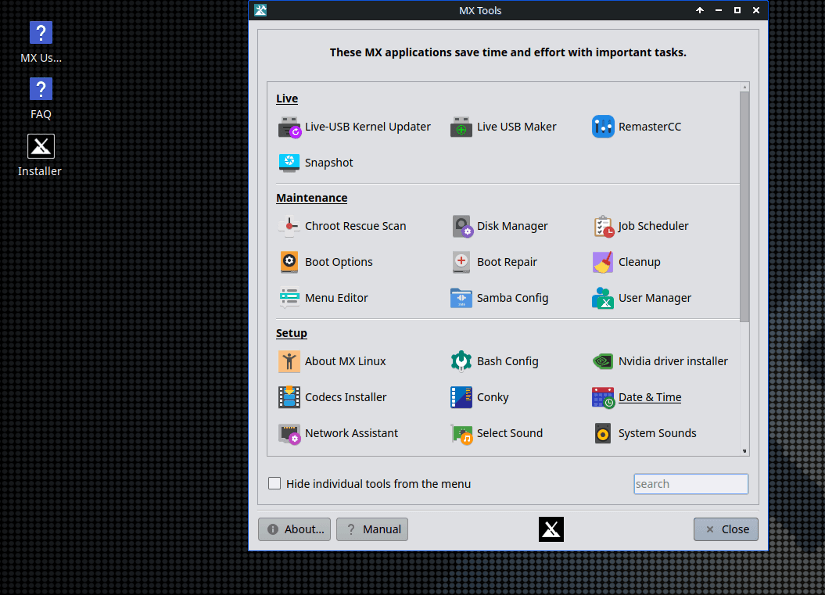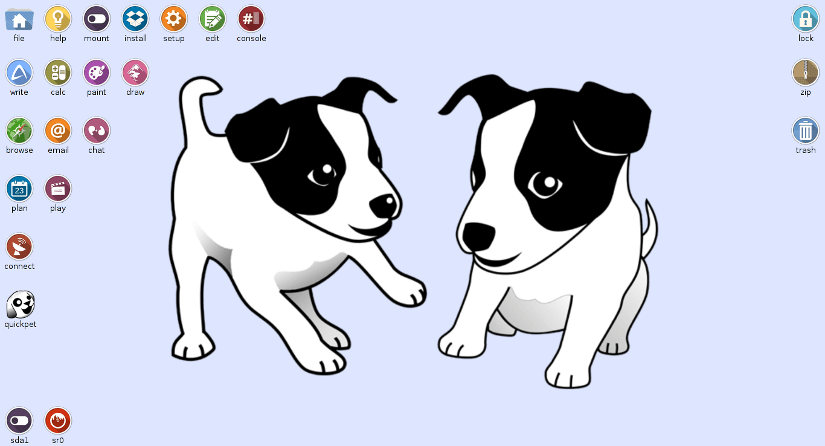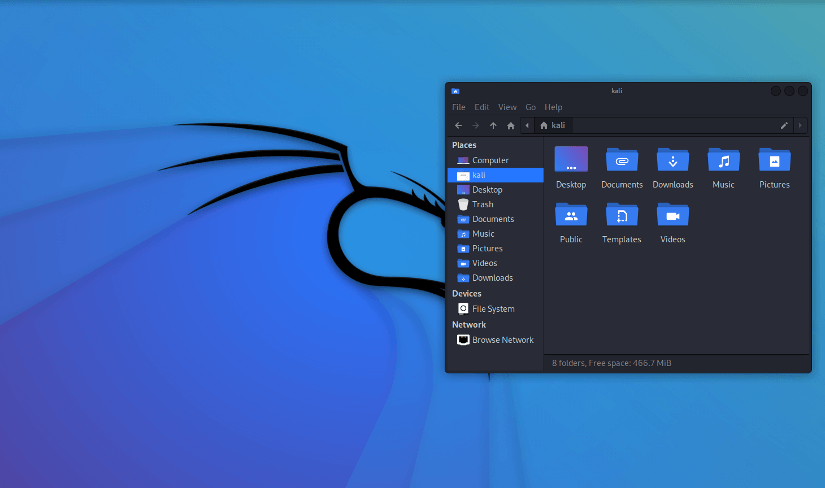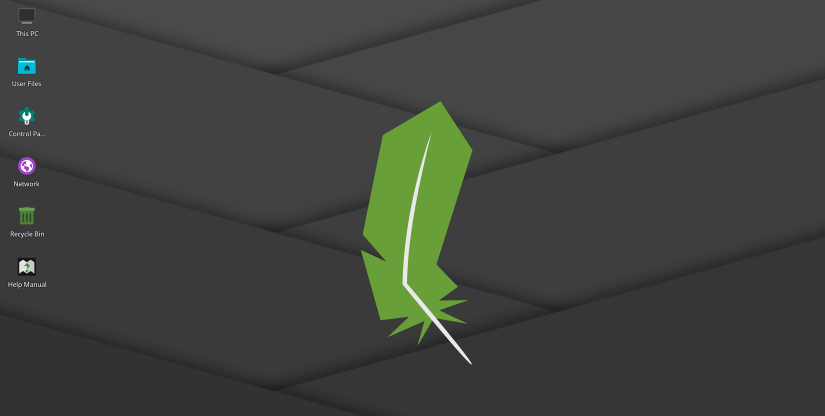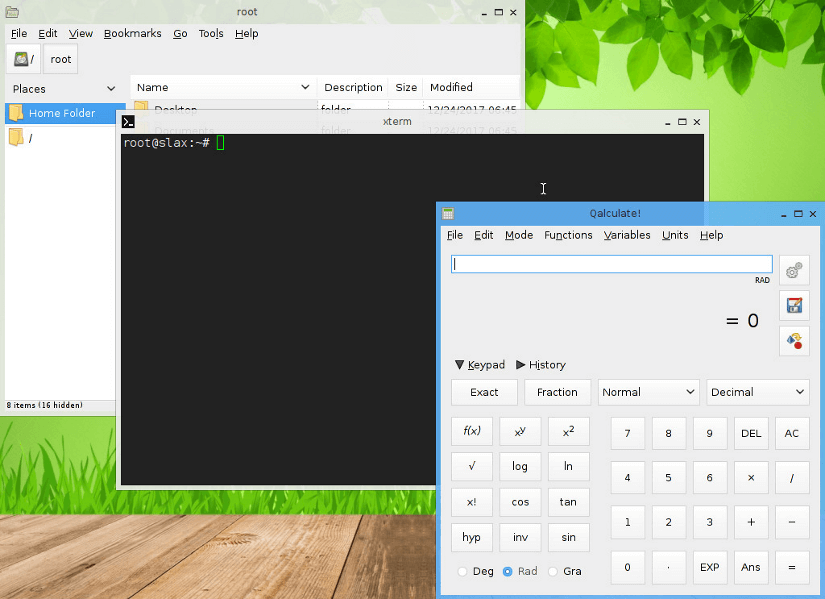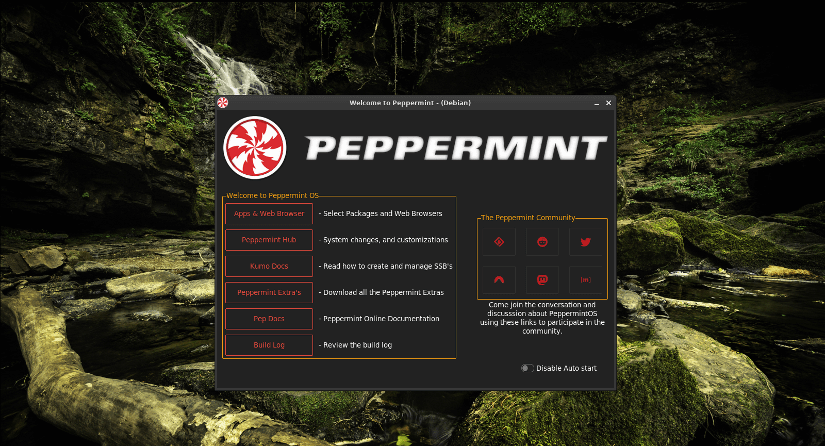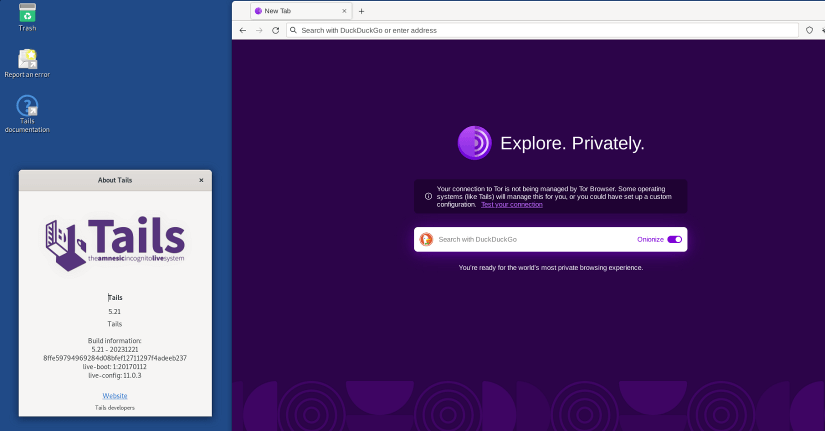FUNDAMENTALS A Complete Guide for Beginners

In Linux, a “distro” (short for distribution) is a complete operating system that consists of the Linux kernel, system utilities, and a variety of software applications. Each distro has its unique strengths and weaknesses which influence the user to choose a suitable one according to their preference. Let’s dive into the article to explore the best live distro options.
What is a Live Distro?
A live distro (short for distribution) refers to the operating system that runs from a removable device like a USB or a DVD. The live distribution does not need to be installed on the hard disk. It fully performs like a complete distribution, including kernel, system utilities, and a variety of software applications. A live distro is suitable when you need a portable environment.
Benefits of Using Live Linux Distros
As a Linux user, you must know the benefits of using live Linux distributions. Let’s take a look at the following section:
- Portable and Lightweight: Live Linux distros allow the users to run on different computers without installing them as you can carry them on USB sticks and DVDs. Live distros are quite lightweight in terms of resource usage which makes them suitable to run on less powerful devices.
- Safety and Versatility: Live distributions offer a secure environment for various tasks damaging the host system. The multiple-task facilities include internet browsing, accessing sensitive data, and testing systems. Various distros are available which help the users to choose the right one according to their preferences and need.
- No Partitioning Need: Without modifying and partitioning the hard disk, one can run the live distro from external storage devices. Where the partitioning is not feasible and the user does not want to change the configuration, live distribution offers a convenient solution.
- Ease of testing other distros: To test and experiment with different live distros, you can boot from live distros. Explore different distributions without changing the primary operating system.
- Cost-effectiveness: Users do not need any additional hardware and software for booting. So, you can download and use live distribution at a low cost.
- Flexible Customization: Provide flexibility in customization as users can configure the settings and add and save software packages.
Factors to Consider Before Choosing a Live Linux Distro
Choosing a Live Linux distro might be difficult, especially if you are new to Linux. There are numerous Live Linux distributions to choose from, each with a unique combination of features, advantages, and disadvantages. Here are some things to think about while picking a Live Linux distribution to help you make a wise choice:
- Purpose and Use Case: Think about the Live Linux distribution’s use case and goal. Developers design different Linux distributions for various use cases, including general use, programming, gaming, and multimedia editing.
- Hardware Compatibility: Even though Live Linux distributions generally do not support all hardware, Linux is known for its hardware compatibility. Consider using a distribution that supports your hardware, especially if it is older or less widespread.
- Ease of Use: Choose a Live Linux distribution that is simple to use and has a user-friendly interface if you are new to Linux. Consider your level of experience when choosing distros as some have simpler interfaces than others.
- Software Availability: Consider the software you require and choose a distribution that supports it. Make sure the Linux distribution you choose has the software you require because different Linux distributions have different software repositories.
- Stability and Security: Choose a distro that supports the software you require after taking it into account. Make sure the Linux distribution you select has the necessary software because different Linux distributions have various software repositories.
- Customization: Linux is known for being adaptable and customizable. If you have specialized demands or preferences for customization, choose a Live Linux distro that enables customization.
- Community Support: Consider the level of community support available for the Live Linux distro. A strong community can provide essential resources, support, and troubleshooting support when you need it.
- Update and Upgrade Policy: Check out the Live Linux distro’s update and upgrade procedures. Some distros offer rolling releases, while others use a more traditional release approach. Choose a distribution that fits your preferences and requirements.
8 Best Live Linux Distros
In this section, the article will discuss about 8 live Linux distros with their official download page link. Moreover, it will discuss the reasons why you might use it or not. So that this article helps you to choose the best live distro as an operating system.
1. MX Linux
MX Linux is a Debian-based Linux distro which is a cooperative venture of the antiX and MX Linux communities. It is a fast distro and quite lightweight in comparison to many other available distro which makes it suitable for live Linux distro. Its live USB feature has inherited from the antiX which makes it portable.
Reasons to Choose MX Linux
- Simple configuration.
- Provides high stability and solid performance.
- Impressive portability.
- Highly customizable.
- Provides extensive software support such as LibreOffice, Firefox, and GIMP.
Reasons to Avoid MX Linux
- Smaller community support.
- Less frequent updates.
- Less commercial support.
2. Puppy Linux
Puppy Linux is an excellent choice as a live distro. Its fast and lightweight nature makes it an ideal choice for running directly from the USB drive or DVD. Its user-friendly interface and customization choices make it a favorable solution for many users. Whenever you need to test, troubleshoot, or use an easy and simple operating system, then Puppy Linux is the best option.
Reasons to Choose Puppy Linux
- Fast and lightweight.
- Ready for immediate use.
- Despite its extraordinarily small size, offers all features.
- Uses multisession formatted CD-RW/DVD-RW to save everything.
- Customizable according to user preference.
Reasons to Avoid Puppy Linux
- Limited software availability.
- Small community support.
- Less refined interface compared to others.
3. Kali Linux
Kali Linux is a Debian-based distribution that is mainly used for testing and security auditing because of its collection of security tools. As a live distro, Kali Linux boots into a secure environment from a USB device or DVD without installing it.
Reasons to Choose Kali Linux
- Provides a wide range of penetration tools.
- Wireless device support.
- Extensive customizable options.
- Provides a secure and privacy-focused environment.
- Large and active community support.
Reasons to Avoid Kali Linux
- Not suitable for general users.
- A little bit slower.
4. Linux Lite
Linux lite is a lightweight and user-friendly distro which makes it suitable as a live distro. It is based on Ubuntu’s long-term support (LTS) release. With its pre-installed applications such as a media player, and full office suits, it provides a smooth experience to the users.
Reasons to Choose Linux Lite
- Simple, user-friendly, and lightweight.
- Provides balanced speed, features, and stability.
- Comes with pre-installed applications.
- Suitable for gaming for its low memory requirements.
- Provides effective support despite having a small community.
Reasons to Avoid Linux Lite
- Not a polished interface.
- Limited software availability.
5. Slax
Slax is a lightweight and portable minimalist desktop live CD derived from Slackware Linux. It offers a small collection of applications such as a web browser, calculator, and text editor. Its minimalistic and modular structure allows users to customize the system easily by manipulating modules.
Reasons to Choose Slax
- Extremely lightweight and its small size makes it portable.
- Modular design increases flexibility.
- Uses low system resources.
- Quick boot time.
- Active and supportive community.
Reasons to Avoid Slax
- Not suitable for resource-intensive tasks because of its lightweight.
- Need to manual installation of additional software package as it comes with small pre-installed applications.
6. PeppermintOS
PeppermintOS is a fast, user-friendly Debian and Devuan-based Linux distribution. Its compatibility with both older and newer computers makes it a popular choice for simple and effective choice for users.
Reasons to Choose PeppermintOS
- Provides a straightforward update.
- Supports smooth cloud-based applications and tools.
- Low-system resources.
- Highly customizable with a wide range of options.
Reasons to Avoid PeppermintOS
- Active but small community support.
- Limited software availability.
7. Tails
Tails is a live and privacy-focused Debian-based operating system. The main focus of the developers while designing it was to provide high security and anonymity. It is suitable for those who want to keep their information private. Tails provides a wide range of internet applications such as IRC clients, mail clients, and web browsers.
Reasons to Choose Tails
- Provides user privacy and anonymity.
- Open-source, fast and portable.
- Boots from live USB devices and DVDs.
- Provides secure features.
- Uses the Tor network which makes it difficult to trace the network.
Reasons to Avoid Tails
- Complex for beginners.
- Not suitable for resource-intensive tasks.
- Lack of customization.
8. Porteus Linux
Porteus Linux is a fast, portable, and modular distro that is designed to run on removable USB devices or DVDs. It is based on the Slackware Linux. For all the changes you make in the live environment, Porteus will save all the things and load them on subsequent boot. Because of its tiny size and lightweight, it takes a little start-up time.
Reason to Choose Porteus
- Lightweight, fast, and portable, boots fast.
- Modular architecture.
- Has an active community.
- Refined and well-structured GUI.
- Persistence functions well.
Reason to Avoid Porteus
- Does not have the latest version of some packages.
- Complex installation process.
Comparison Among Best Live Linux Distros
Take a look at the table below for a complete and comparative analysis of the discussed 8 best Live Linux distros in this article:
| Distribution | Based On | Available Desktop Environment | Image Size | Average User Rating | Release Model |
| MX Linux | Debian, antiX | Fluxbox, KDE Plasma, Xfce | 1.5 to 2.5 GB | 8.13 | Semi-rolling |
| Puppy Linux | Independent | JWM, Openbox | 400 to 500 MB | 7.51 | Fixed |
| Kali Linux | Debian | GNOME, KDE Plasma, Xfce | 400 to 11000 MB | 8.92 | Rolling |
| Linux Lite | Debian,Ubuntu(LTS) | Xfce | 2300 to 2400 MB | 8.06 | Fixed |
| Slax | Debian, Slackware. | Fluxbox | 200 to 300 MB | 6.75 | Fixed |
| PeppermintOS | Debian, Devuan | Xfce | 1300 to 1400 MB | 7.64 | Fixed |
| Tails | Debian | GNOME | 1300 to 1400 MB | 5.3 | Fixed |
| Porteus Linux | Slackware | Cinnamon, GNOME, KDE Plasma, LXDE, LXQt, MATE, Openbox, Xfce | 300 to 500 MB | 9.07 | Fixed |
Note: The average user ratings are based on the user ratings provided on Distrowatch up until 27th March 2024.
Note: The image size may vary with specific editions and versions. All the mentioned sizes correspond to the latest versions.
Conclusion
In conclusion, the article has given insights into the 8 best live Linux distributions. It is important to understand that the best or top distribution is subjective and depends on the users’ preferences, and needs. At last, it can be said that, explore and experiment with the live distros to find the one that aligns best with you.
People Also Ask
Which is the best live Linux distro?
Some of the best live Linus distros are MX Linux, Puppy Linux, Kali Linux, Linux Lite, Tails, Slax, PeppermintOS, Porteus Linux, and antiX.
How do I choose the best live Linux distro for my needs?
When choosing a live Linux distro, keep in mind your specific needs and preferences, such as your level of technical knowledge, the purpose for which you’ll be using the distro, and any hardware specifications you may have. It’s also helpful to read reviews and do research to compare the features and performance of various live Linux distros.
Can I use a live Linux distro as my primary operating system?
It’s possible to use a live Linux distro as your primary operating system, although it might not be the best choice for everyday use. Live Linux distros are intended to be portable and lightweight and thus may lack some of the features and functionality of a full Linux installation.
Are there any security risks associated with using a live Linux distro?
In general, live Linux distributions are considered to be safer than installed operating systems because they don’t leave any traces of your activities on the computer you’re using. But you should still take security measures, like using a VPN and updating your system and software.
How do I save my settings and files on a live Linux distro?
Some live Linux distributions allow you to create a persistence file or partition, which enables you to save your settings and files between sessions. However, not all live Linux distributions support persistence, so it’s necessary to check before using the distro.
What are some of the disadvantages of using a live Linux distro?
Some disadvantages of using a live Linux distro are limited functionality compared to an installed operating system, slower processing speeds as running from external media, and limited storage capacity.
